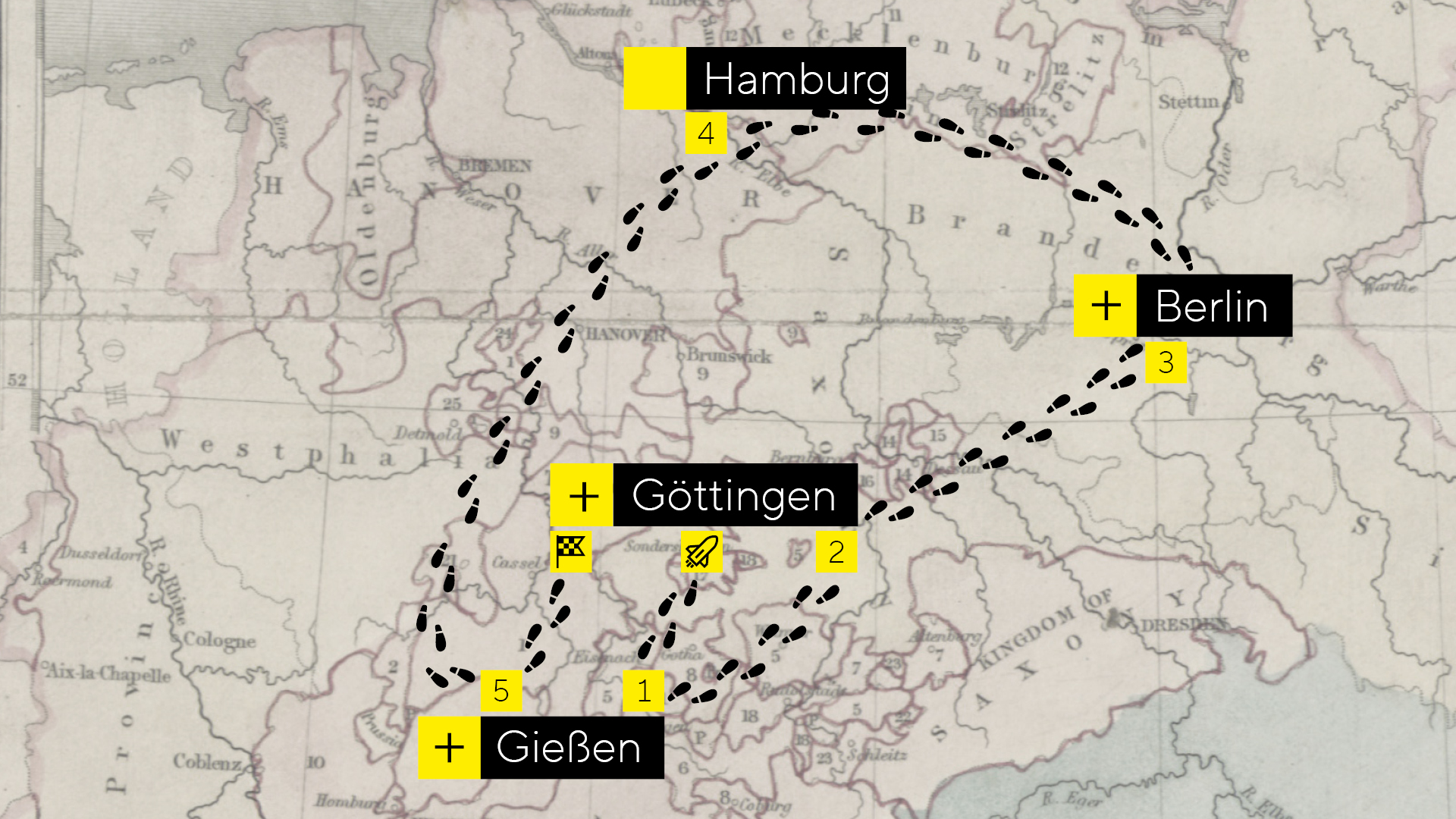Founder - Innovator - Pioneer
From a Workshop to an Industrial Company
100 years after his death, Florenz Sartorius is not only important as a founder and namesake. Coming from a humble background, he turned a precision mechanical workshop into a modern, family-run industrial company.
Florenz's flair for innovation and talent for identifying promising technologies and developing them further was evident in his prime example: the improved short-beam analytical balance. This balance not only laid the foundation for the company's success, but it also symbolizes Sartorius's relentless commitment to accelerating research processes.

Knowledge Transfer Through Travel
The Path to Self-Employment
Florenz Sartorius was born on April 10, 1846, as the son of a respected but impoverished watchmaker in Göttingen. After the death of his father around 1855, he grew up as a half-orphan in humble circumstances with two siblings and his mother.
After leaving school, he completed an apprenticeship as a precision mechanic and trainee in Göttingen before embarking on the traditional years of travel with renowned workshops and companies in 1865. Well prepared for entrepreneurship, he finally founded his own precision mechanical workshop in Göttingen at the age of 24.
Florenz’ Steps Before Founding Sartorius


Precise Instruments for Research & Industry
Where Craftsmanship, Instinct, and Innovation Converge
Florenz Sartorius combined skilled craftsmanship with an unerring instinct for promising innovations, which he improved and adapted to market and customer requirements. This was evident in his key product, the short-beam analytical balance, which was of particular interest to the burgeoning chemical industry. In the context of the mechanization of agriculture in the German Empire, he once again demonstrated a keen instinct in the late 1880s when he added incubators to his range of products.
A Look at the Product Portfolio
The Basis for Global Success
The introduction of an innovative, short-beam analytical balance, which impressed with its speed and user-friendliness, was the basis for the company's global success. In 1874, shortly after the market launch, Florenz Sartorius received the highest award at an exhibition in Bremen. In 1876, the balance also won an award at the World's Fair in Philadelphia.
Against The Myth
Florenz Sartorius was not the inventor of the short-beam analytical balance. From the end of 1872, however, he developed an improved version in collaboration with the chemist Friedrich Frerichs. For the practical implementation, Frerichs turned to Sartorius, who made further optimizations, such as the use of a special aluminium alloy for the balance beam. Sartorius integrated the balance into his product portfolio and applied for patents for the improvements from 1875.
Incubators for Poultry Breeding
At the end of the 1880s, Florenz Sartorius recognized the potential of incubators for poultry breeding. He was probably inspired by international exhibitions and the advancing mechanization of agriculture. He took advantage of a later market entry by improving existing models from abroad, in particular through precise temperature control.
Microtomes
In April 1904, Sartorius took over the Göttingen workshop of August Becker, known in particular for the production of microtomes. Microtomes are cutting devices for the production of ultra-fine microscopic specimens, which were used in anatomical and physiological laboratories. They remained part of the product portfolio until the 1970s.

From a Workshop to an Industrial Business
Long-Term Investments Instead of Short-Term Returns
Florenz Sartorius continuously invested a large part of his sales revenue in expanding capacity and in efficient production methods. With the move to the new factory building on Weender Landstraße in 1898, the once small craft business finally developed into a modern, export-oriented industrial company with a large vertical range of modern manufacture and series production.
Factory Premises with a Vision for the Future
After several phases of expansion and relocation of his workshops within Göttingen - from Groner Straße to Weender Straße and Maschmühlenweg - as well as the establishment of a branch in Rauschenwasser in 1892, Florenz Sartorius moved into a new factory site in Weender Landstraße just outside the city in 1898. This remained the company's headquarters until 2017 and is known today as the Sartorius Quartier.
Systematic Apprenticeship
In the course of the company's continuous growth, Florenz Sartorius set up an apprentice workshop in 1907 for systematic training, as a qualified and well-integrated skilled workforce was recognized as the basis for success. Two years later, a company health insurance fund was founded in order to guarantee formally secured social benefits, welfare and thus also company loyalty.
From Göttingen to the World
In order to establish the Sartorius brand, Florenz Sartorius presented its laboratory instruments on international stages from early on. Starting in 1876 in Philadelphia, the company received awards for its innovative products at six further world exhibitions up to 1911. By this time, around 56 percent of the company's analytical balances were exported to Europe, Asia, America and Africa.
Successful Generational Transition: Sartorius Evolves into a Family Business
Florenz Sartorius took care of an orderly succession early on. In 1906, following the acquisition of two workshops, the company was converted into a general partnership and his three eldest sons were registered as partners. Shortly before the First World War, in 1914, Florenz Sartorius finally withdrew from the operative business and moved to the Supervisory Board when the company was transformed into Sartorius-Werke AG.
At the factory site in Rauschenwasser, he and his youngest son devoted the last part of his life to the manufacture of incubators, fishing tackle and fish farming instruments.
The Sartorius Family
